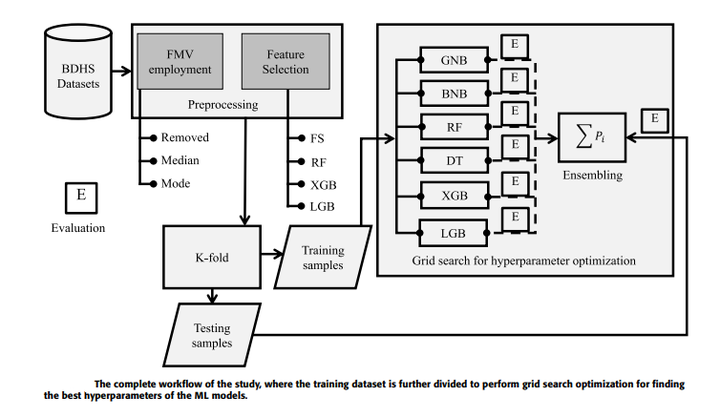Associating measles vaccine uptake classification and its underlying factors using an ensemble of machine learning models
 Proposed framework
Proposed framework
Abstract
Measles is one of the significant public health issues responsible for the high mortality rate around the globe, especially in developing countries. Using nationally representative demographic and health survey data, measles vaccine utilization has been classified, and its underlying factors are identified through an ensemble Machine Learning (ML) approach. Firstly, missing values are imputed by employing various approaches, and then several feature selection techniques are applied to identify the crucial attributes for predicting measles vaccination. A grid search hyperparameter optimization technique has been applied to tune the critical hyperparameters of different ML models, such as Naive Bayes, random forest, decision tree, XGboost, and lightgbm. The individual optimized ML model’s categorization performance, as all their ensembles have been reported utilizing our proposed BDHS dataset. Individually, the optimized lightgbm provides the highest precision and AUC of 79.90% and 77.80%, respectively. This result improved when the optimized lightgbm was ensembled with XGboost, providing precision and AUC of 84.60% and 80.0%, respectively. Our result reveals that the statistical median imputation technique with the XGboost-based attribute selection method and the lightgbm classifier provides the best individual result. The performance improved when the proposed weighted ensemble of the XGboost and lightgbm approach was adopted with the same preprocessing and recommended for measles vaccine utilization. The significance of our proposed approach is that it utilizes minimum attributes collected from the child and their family members and yielded 80.0% accuracy, making it easily explainable by caregivers and healthcare personnel. Finally, our predictive model provides an early detection procedure to help national policymakers enforce new policies with specific rules and regulations.